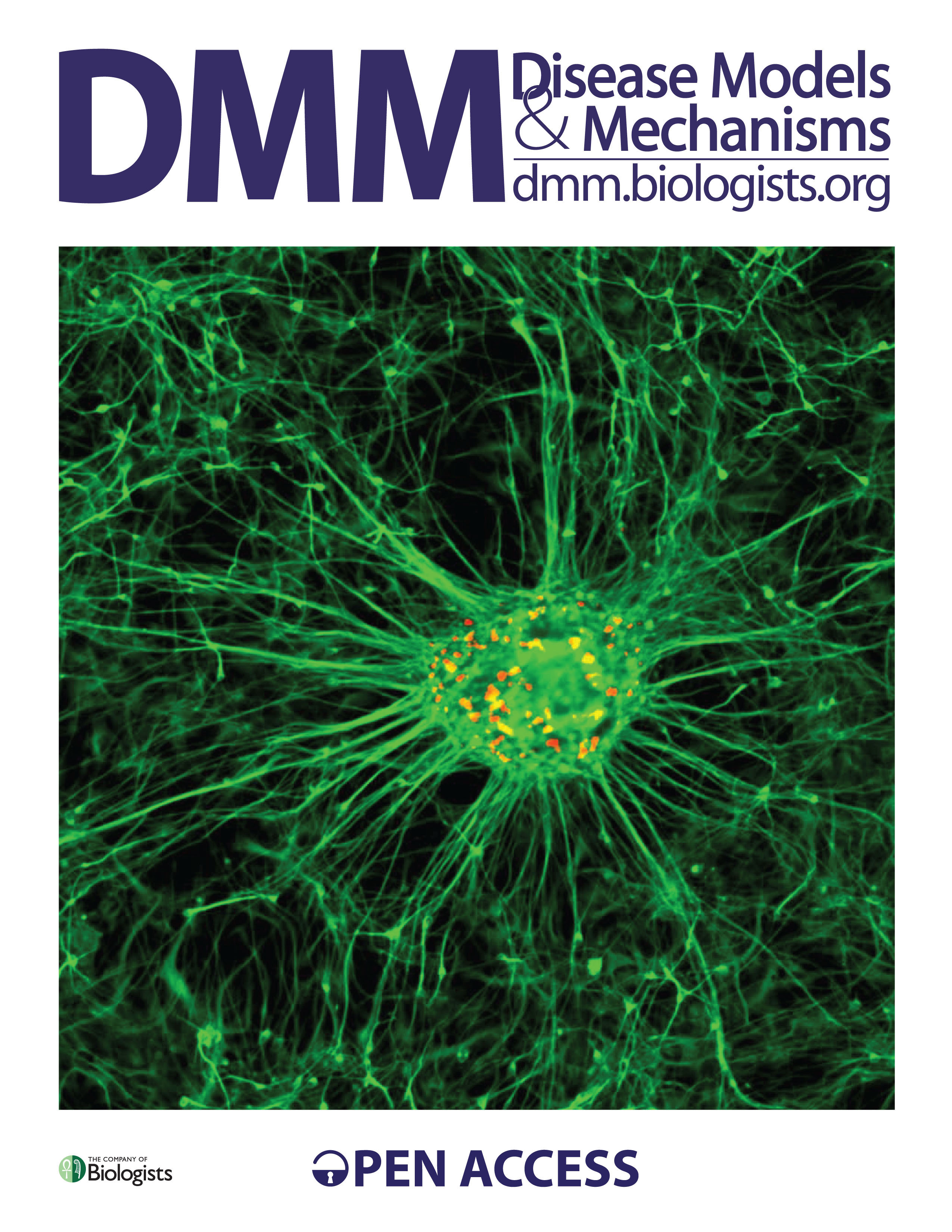Featured Paper of the Month – April 2015
Kindberg, Abigail A; Bendriem, Raphael M; Spivak, Charles E; Chen, Jia; Handreck, Annelie; Lupica, Carl R; Liu, Jinny; Freed, William J; Lee, Chun-Ting
An in vitro model of human neocortical development using pluripotent stem cells: cocaine-induced cytoarchitectural alterations. Journal Article
In: Dis Model Mech, vol. 7, no. 12, pp. 1397–1405, 2014, ISSN: 1754-8411 (Electronic); 1754-8403 (Linking).
@article{Kindberg2014b,
title = {An in vitro model of human neocortical development using pluripotent stem cells: cocaine-induced cytoarchitectural alterations.},
author = {Abigail A Kindberg and Raphael M Bendriem and Charles E Spivak and Jia Chen and Annelie Handreck and Carl R Lupica and Jinny Liu and William J Freed and Chun-Ting Lee},
url = {https://www.ncbi.nlm.nih.gov/pubmed/25288682},
doi = {10.1242/dmm.017251},
issn = {1754-8411 (Electronic); 1754-8403 (Linking)},
year = {2014},
date = {2014-10-02},
journal = {Dis Model Mech},
volume = {7},
number = {12},
pages = {1397--1405},
address = {Cellular Neurobiology Research Branch, Intramural Research Program (IRP), National Institute on Drug Abuse, National Institutes of Health (NIH), Department of Health and Human Services (DHHS), Baltimore, MD 21244, USA.},
abstract = {Neocortical development involves ordered specification of forebrain cortical progenitors to various neuronal subtypes, ultimately forming the layered cortical structure. Modeling of this process using human pluripotent stem cells (hPSCs) would enable mechanistic studies of human neocortical development, while providing new avenues for exploration of developmental neocortical abnormalities. Here, we show that preserving hPSCs aggregates - allowing embryoid body formation - while adding basic fibroblast growth factor (bFGF) during neuroepithelial development generates neural rosettes showing dorsal forebrain identity, including Mash1(+) dorsal telencephalic GABAergic progenitors. Structures that mirrored the organization of the cerebral cortex formed after rosettes were seeded and cultured for 3 weeks in the presence of FGF18, BDNF and NT3. Neurons migrated along radial glia scaffolding, with deep-layer CTIP2(+) cortical neurons appearing after 1 week and upper-layer SATB2(+) cortical neurons forming during the second and third weeks. At the end of differentiation, these structures contained both glutamatergic and GABAergic neurons, with glutamatergic neurons being most abundant. Thus, this differentiation protocol generated an hPSC-based model that exhibits temporal patterning and a neuronal subtype ratio similar to that of the developing human neocortex. This model was used to examine the effects of cocaine during neocorticogenesis. Cocaine caused premature neuronal differentiation and enhanced neurogenesis of various cortical neuronal subtypes. These cocaine-induced changes were inhibited by the cytochrome P450 inhibitor cimetidine. This in vitro model enables mechanistic studies of neocorticogenesis, and can be used to examine the mechanisms through which cocaine alters the development of the human neocortex.},
keywords = {},
pubstate = {published},
tppubtype = {article}
}
Neocortical development involves ordered specification of forebrain cortical progenitors to various neuronal subtypes, ultimately forming the layered cortical structure. Modeling of this process using human pluripotent stem cells (hPSCs) would enable mechanistic studies of human neocortical development, while providing new avenues for exploration of developmental neocortical abnormalities. Here, we show that preserving hPSCs aggregates - allowing embryoid body formation - while adding basic fibroblast growth factor (bFGF) during neuroepithelial development generates neural rosettes showing dorsal forebrain identity, including Mash1(+) dorsal telencephalic GABAergic progenitors. Structures that mirrored the organization of the cerebral cortex formed after rosettes were seeded and cultured for 3 weeks in the presence of FGF18, BDNF and NT3. Neurons migrated along radial glia scaffolding, with deep-layer CTIP2(+) cortical neurons appearing after 1 week and upper-layer SATB2(+) cortical neurons forming during the second and third weeks. At the end of differentiation, these structures contained both glutamatergic and GABAergic neurons, with glutamatergic neurons being most abundant. Thus, this differentiation protocol generated an hPSC-based model that exhibits temporal patterning and a neuronal subtype ratio similar to that of the developing human neocortex. This model was used to examine the effects of cocaine during neocorticogenesis. Cocaine caused premature neuronal differentiation and enhanced neurogenesis of various cortical neuronal subtypes. These cocaine-induced changes were inhibited by the cytochrome P450 inhibitor cimetidine. This in vitro model enables mechanistic studies of neocorticogenesis, and can be used to examine the mechanisms through which cocaine alters the development of the human neocortex.

